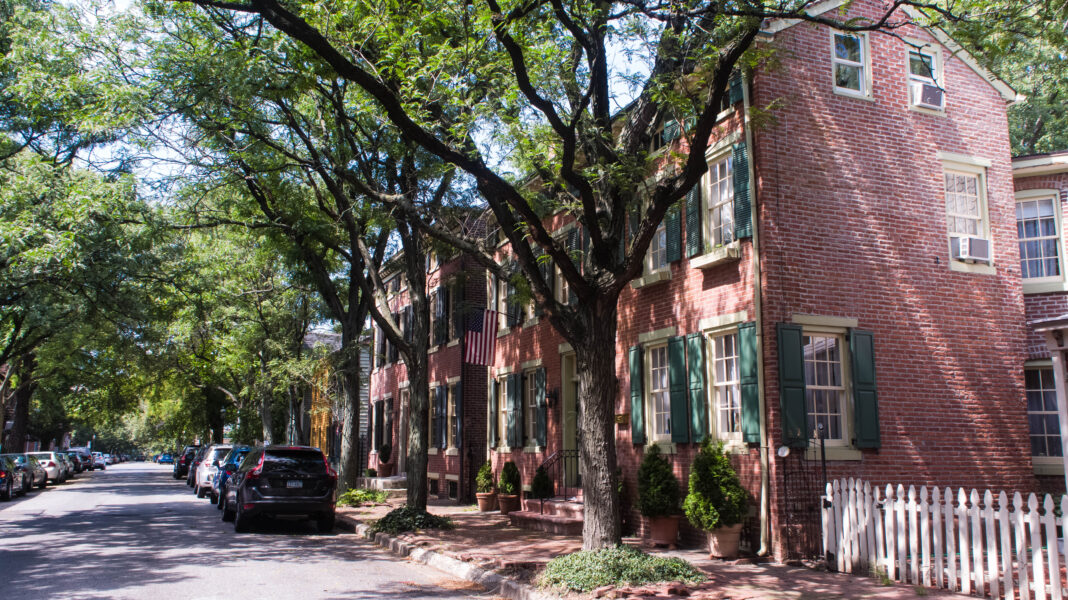If you’ve lived in Trenton for any period of time, there’s no doubt you’re well-acquainted with the historic nature of our community. From the start of our nation to the Industrial Revolution and more, the Capital City has always played an instrumental role in moving our nation forward. But while we have heard countless tales of our community’s great contributions, it is not often that we hear what day to day life was like for some of Trenton’s earliest residents. Today, let’s explore what a day in the life may have been like in the early days of Colonial Trenton and illuminate how you can experience the beginnings of Trenton for yourself.
Although the sights and sounds of Trenton has no doubt evolved over the years, the hustle and bustle of the city has been present from its very first days. Due to its central location and access to waterways, roads, and more, Trenton has always been an ideal location for trade. As a result of this central location, Trenton found itself home to a number of visitors and businessmen from surrounding metropolitan areas, including major cities like Philadelphia and New York City. Trenton’s early industries included paper, textiles, and more. One of Trenton’s oldest relics of industry, Mahlon Stacy’s Grist Mill, opened its doors in 1679, paving the way for a boom of industry to come.
Over the years, Trenton would become known for a number of in-demand industries, including rubber, iron, porcelain, and more. For a glimpse at Trenton’s industrial history, we’d recommend taking a stroll by the New Jersey Statehouse, where you can get an up close look at the former site of Petty’s Run, where you can find New Jersey’s first documented evidence of an 18th-century steel furnace.
During the Colonial Era, Trenton was also home to a number of esteemed visitors and guests. In August 1774, John Adams, who would later go on to become the 2nd President of the United States, remarked, “Rode to Trenton [from Princeton] to breakfast at William’s Tavern, the tavern at Trenton Ferry, we saw four very large black walnut trees standing in a row behind the house. The town of Trenton is a pretty village. It appears to be the largest town we have seen in the Jerseys.” Trenton was also famously visited by President George Washington, who led his troops to victory during the Battle of Trenton and fundamentally changed the trajectory of the American Revolution. To follow in the footsteps of a real Revolution-era soldier, we recommend visiting the Old Barracks for a taste of what life was like as a member of the US forces.
As far as architecture and design is concerned, many relics of Trenton’s past can still be observed today. If you take a stroll through Downtown Trenton, chances are you’ll find yourself wandering upon cobblestone streets, harkening back to one of Trenton’s earliest manifestations of infrastructure. Trenton is also lucky enough to call itself home to a dynamic collection of colonial housing stock, with many of these homes still standing today. For a feel for what home may have looked like during Trenton’s early days, we recommend a stroll through the Mill Hill neighborhood to get a taste of Trenton’s past. While the city’s landscape has certainly evolved over the years, these well-maintained marvels of architecture serve as a remarkable reminder of the community’s roots.
As you can see, although the fine details may have changed, a day in the life of Trenton’s past is not too different than the life we lead today. In its present state, Trenton remains a centrally located community which continues to hold political, historical, and economic influence on a national scale. Likewise, true to the “Trenton Makes, the World Takes” motto, our community continues to forge ahead in the world of industry and business. The moral of the story is, no matter what time period you called Trenton your home, there is always a reason to be proud of your community.
For more information on what life was like in Trenton’s early days, the Trenton Historical Society has compiled a tremendous amount of information regarding Trenton’s past, linked here: A History of Trenton – 1679-1929. Understanding Trenton’s past is a tool we can use to shape the future, and a day spent back in time is just what the doctor ordered for a refreshing perspective on how far our community has come.





